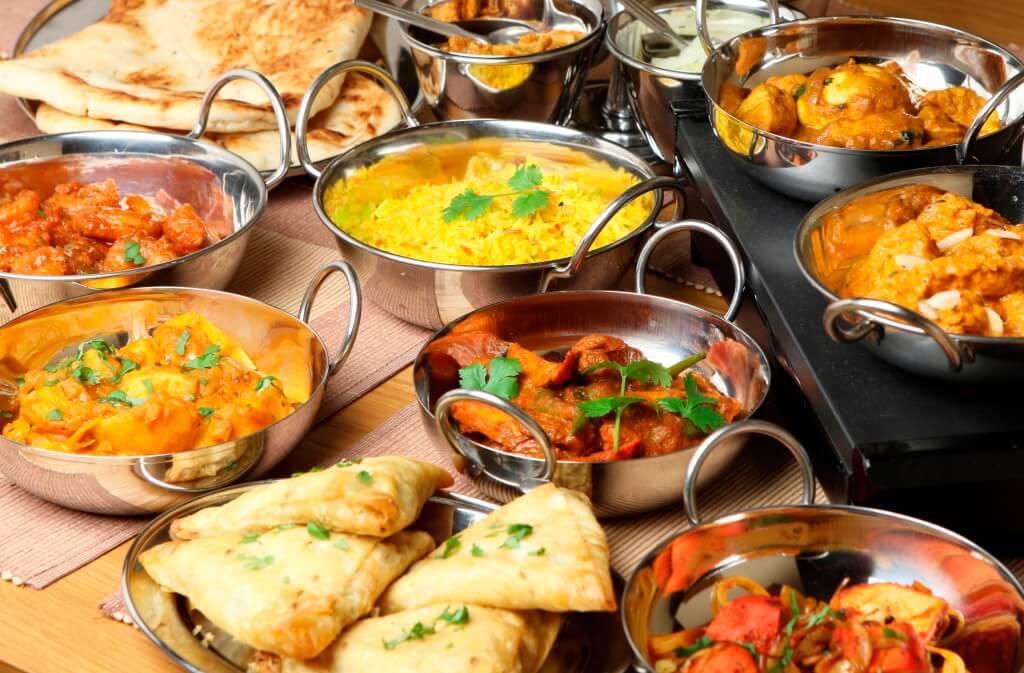
Image Source: Google
Awadhi cuisine is a traditional cuisine that hails from the Northern part of India, specifically the region of Awadh (now known as Lucknow). This cuisine is known for its rich and flavorful dishes that are a true reflection of the region's rich and diverse culinary heritage. Over the years, Awadhi cuisine has evolved and adapted to modern tastes and cooking techniques, resulting in a wonderful fusion of traditional and contemporary flavors.
Traditional Awadhi dishes are characterized by the use of aromatic spices, slow cooking techniques, and a focus on rich flavors. One of the most famous dishes from the Awadhi cuisine is the iconic Lucknawi biryani, which is a delicious mix of fragrant basmati rice, tender meat (usually goat or chicken), and a blend of spices that create a burst of flavors in every bite.
Another staple in Awadhi cuisine is the kebab, with varieties such as galouti kebab, shammi kebab, and kakori kebab being popular choices among food enthusiasts.
One of the key ingredients in traditional Awadhi cuisine is ghee, which is clarified butter that adds a rich and decadent flavor to the dishes. Ghee is used generously in dishes like biryanis, kebabs, and curries, giving them a distinctive taste that is unique to Awadhi cuisine. Along with ghee, traditional Awadhi dishes also make use of a variety of spices like cardamom, cloves, cinnamon, and saffron, which add depth and complexity to the flavors.
However, with the changing times and the influence of modern cooking techniques, Awadhi cuisine has seen a shift towards lighter and healthier options. While traditional dishes are still cherished and enjoyed, modern interpretations of Awadhi cuisine have started to gain popularity among food lovers. Chefs are now experimenting with techniques like grilling, baking, and steaming to create healthier versions of classic dishes without compromising on taste.
One example of a modern twist on traditional Awadhi cuisine is the use of lean meats like chicken and fish in place of the more traditional goat or lamb. This not only reduces the fat content of the dishes but also makes them more accessible to a wider audience. Additionally, chefs are now incorporating more vegetables and plant-based proteins into their dishes to cater to the growing demand for plant-based options.
Another trend in modern Awadhi cuisine is the use of alternative grains like quinoa, millet, and buckwheat in place of traditional rice and wheat. These grains add a unique texture and flavor to the dishes while also providing a healthier alternative for those looking to reduce their gluten intake. Along with alternative grains, chefs are also experimenting with dairy-free alternatives like coconut milk and cashew cream to create rich and creamy dishes without the use of traditional dairy products.
Despite these modern adaptations, traditional Awadhi dishes continue to hold a special place in the hearts of food enthusiasts. Dishes like dum pukht, nihari, and rogan josh are still enjoyed for their authentic flavors and time-honored cooking techniques. The art of slow cooking and marinating meats for hours in a blend of spices is a tradition that has been passed down through generations and continues to be cherished in Awadhi cuisine.
In conclusion, the evolution of Awadhi cuisine dishes from traditional to modern reflects a blend of heritage and innovation. While traditional dishes continue to be celebrated for their rich flavors and authentic techniques, modern interpretations offer a fresh and healthy take on classic favorites. Whether you prefer the comforting richness of traditional kebabs and biryanis or the lightness of modern grilled meats and vegetable-based dishes, Awadhi cuisine has something to offer for every palate.